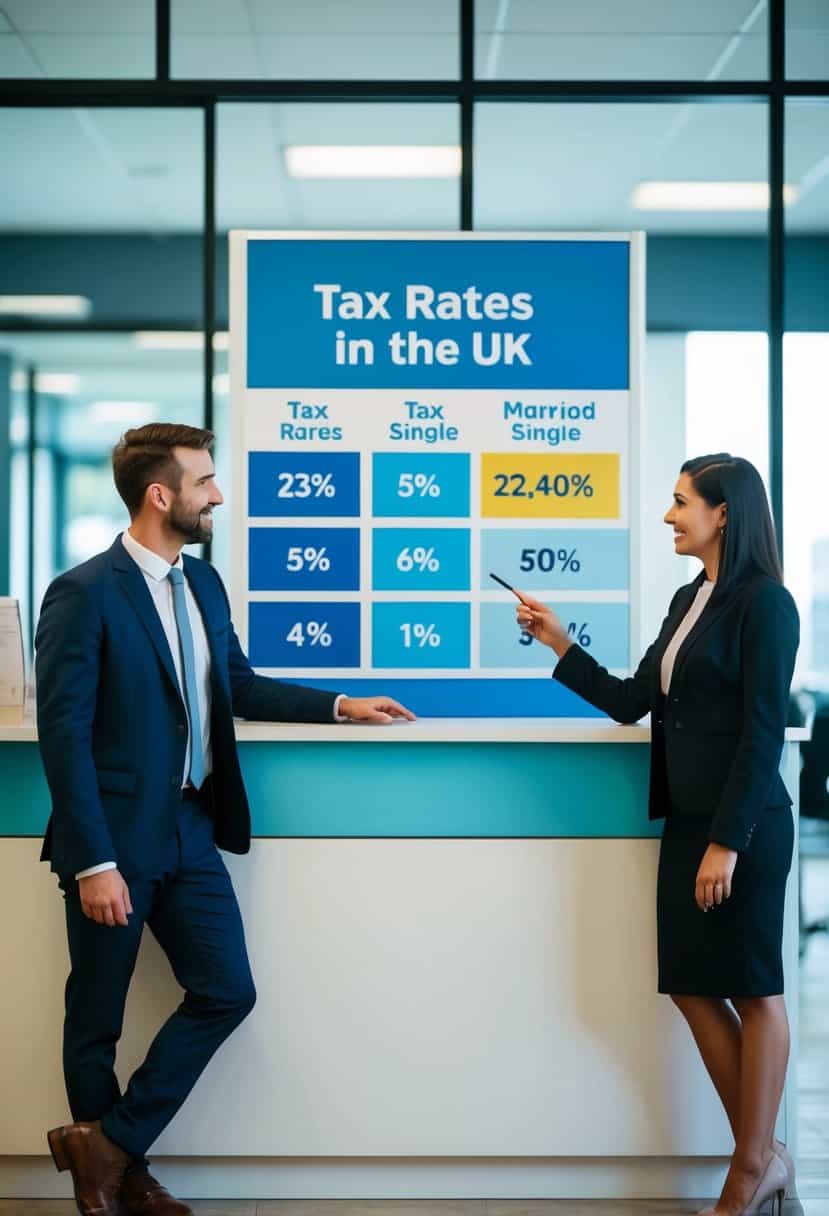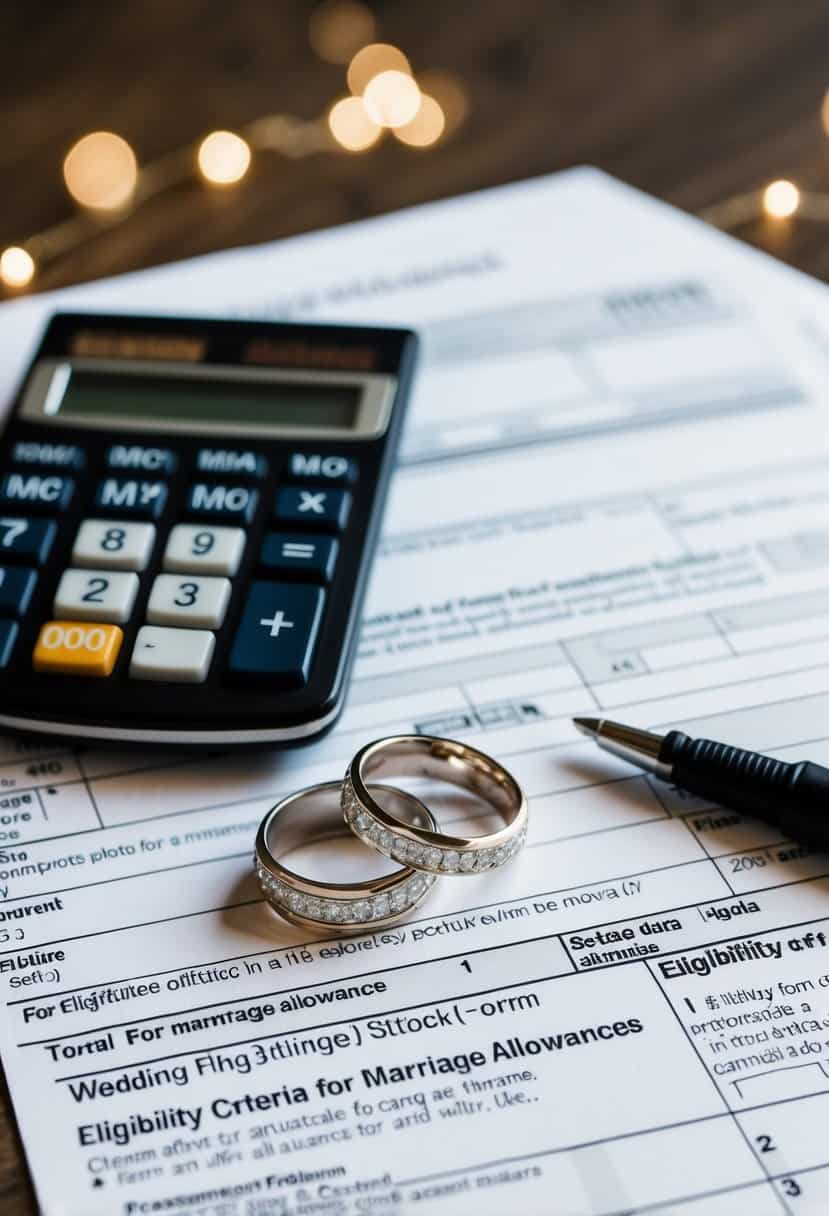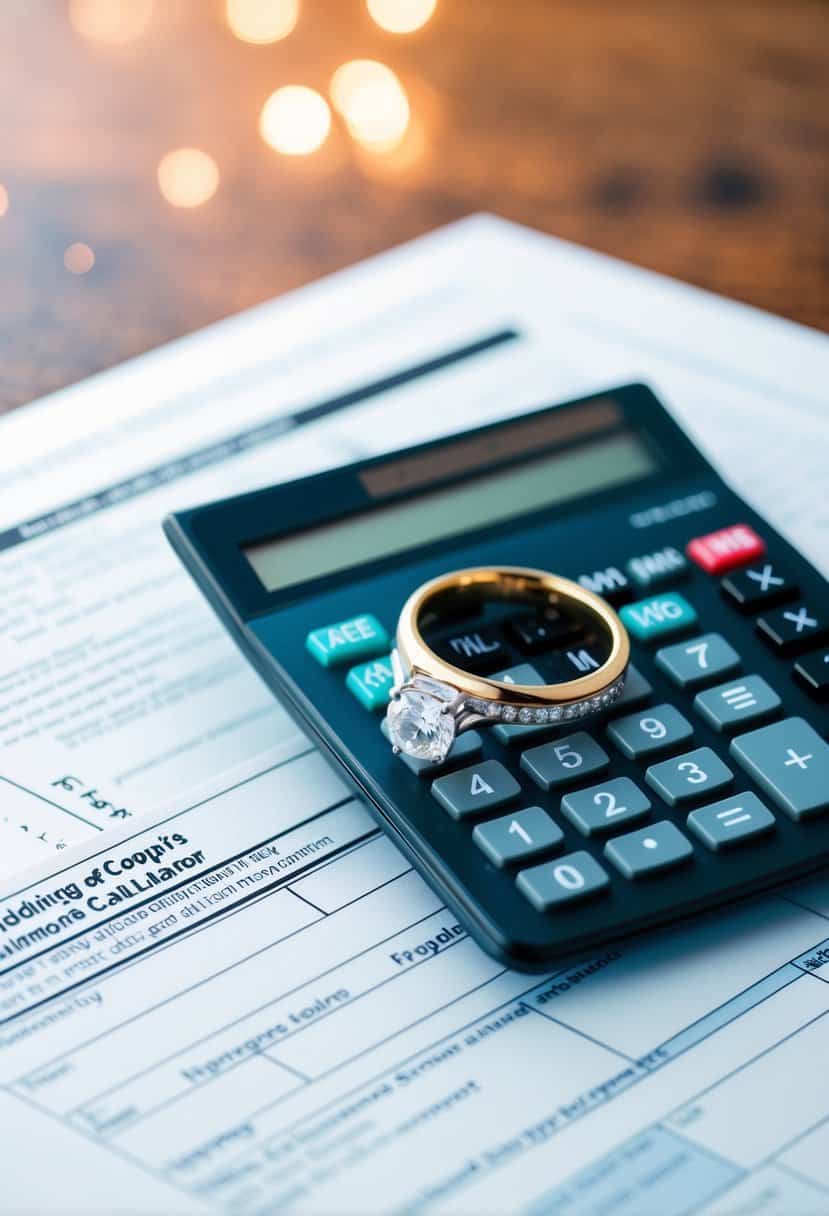Do I Pay Less Tax if I Am Married in the UK? Exploring Potential Benefits
Are you wondering if tying the knot will lighten your tax bill in the UK? For many married couples or those in a civil partnership, there are indeed ways to save on income tax. You may qualify for the Marriage Allowance, which lets one partner transfer a portion of their tax-free Personal Allowance to the other, potentially saving up to £252 a year.

To benefit, one spouse must earn below the Personal Allowance threshold, while the other is a basic-rate taxpayer. This is handy because it allows the lower-earning partner to share their unused personal allowance with their partner, reducing the overall income tax owed.
In addition to the Marriage Allowance, different rules apply to the Married Couple’s Allowance for those married before a certain date, potentially offering tax savings between £427 and £1,108 annually.
Curious about how these allowances might apply to you? Dive into the rest of this post to explore your options and see how you might reduce your tax bill.
Understanding Marriage Tax Benefits

When you’re married in the UK, certain tax advantages can help you save money. Key options include Marriage Allowance and Married Couple’s Allowance, which reduce the tax bill for you and your spouse.
Marriage Allowance Explained
The Marriage Allowance lets you transfer part of your unused Personal Allowance to your spouse. This is helpful if you are a non-taxpayer or a lower earner. Your partner must be a basic-rate taxpayer to receive the benefit.
By transferring up to £1,260, you can reduce your combined tax bill. This can result in up to £252 saved in a tax year. To qualify, both you and your partner need to be married or in a civil partnership. It’s an easy way to make sure your unused allowances don’t go to waste.
Married Couple’s Allowance
The Married Couple’s Allowance is another benefit, which can reduce your tax bill by between £427 and £1,108 annually. This allowance is usually available for couples where at least one partner was born before April 6, 1935.
This tax relief works by adjusting your tax calculations. It takes a percentage off the allowance, lowering the overall tax you need to pay. If you qualify, this can be a considerable relief.
Transferable Tax Allowances
Transferable tax allowances work by letting spouses share unused allowances. This practice is part of the Marriage Allowance scheme. When one partner isn’t using all of their Personal Allowance, they can transfer the extra to the other spouse. This optimizes your tax-free income levels between partners.
Typically, the higher-rate taxpayer benefits most when their partner transfers unused allowances. To make the most of this, both partners need to be aware of each other’s income levels. It’s a great way to ensure nothing is left unclaimed.
Eligibility Criteria for Marriage Allowances

To benefit from marriage allowances in the UK, you need to meet certain criteria. Age, income, and marital status play important roles in determining eligibility for these tax benefits.
Age Considerations
For the Marriage Allowance, there are no strict age requirements. This means that as long as you meet the other eligibility criteria, your age won’t be a factor.
However, if you or your partner were born before 6 April 1935, you might qualify for the Married Couple’s Allowance. This type of allowance offers different benefits and rules compared to the standard marriage allowance. It’s specifically designed to offer support for older couples by reducing their tax bills.
Income Requisites
One essential criterion for claiming the Marriage Allowance is income. Typically, one partner must be a non-taxpayer, which usually means earning less than the £12,570 Personal Allowance. The partner seeking to transfer options must have the lowest income.
The other individual will be the basic-rate taxpayer. Their annual income should be between £12,571 and £50,270. In Scotland, this threshold is slightly different, affecting eligibility based on local tax rules.
When these conditions are met, a portion of the lower earner’s personal tax allowance can shift to the higher earner.
Status Qualifications
To qualify for marriage allowances, you must be in a legal marriage or a civil partnership. Just living together without a formal relationship doesn’t count.
To receive or transfer the allowance, both partners must be present in the UK tax system. Being recognized legally as partners is essential for this financial benefit. Additionally, it becomes crucial that both partners must stay within the tax regulations set by the UK government.
These qualifications ensure that the tax system clearly recognizes your union and allows for the benefit transfer. This setting underlines the importance of legitimate recognition by tax authorities, ensuring you and your partner can maximize tax benefits effectively.
How to Apply for Marriage Tax Allowances

You can apply for marriage tax allowances to transfer part of your unused Personal Allowance to your partner, potentially reducing their tax. This involves an application process, specific documents, and potential contact with HMRC.
Application Process
To start, visit the GOV.UK website for Marriage Allowance. The application is free and can be completed online. If one of you has no other income but your wages, the person with the lower income should apply.
To qualify, you must be married or in a civil partnership. One partner should be a non-taxpayer, generally earning less than the Personal Allowance threshold. The other should be a basic-rate taxpayer, earning below £50,270 annually (or £43,662 in Scotland).
Required Documents
Gather the necessary documents before you apply. You will need both partners’ National Insurance numbers. Having your recent payslips or P60s ready is also helpful. These documents aid in verifying your status and income levels.
Also, ensure you know your partner’s basic details to fill out the application accurately. It can speed up the process and minimize any follow-up queries from HMRC.
Contacting HMRC
If you encounter issues or have questions, contact HMRC for assistance. The Income Tax helpline at GOV.UK is your first point of contact.
You can call to get guidance on self-assessment or to resolve any queries related to your Marriage Allowance application. Keep your National Insurance number handy when contacting them, as it’s typically required for verification.
If you need to update any details, such as changes in circumstances, let HMRC know promptly. This ensures your application or allowance is adjusted accordingly.
Tax Codes and the Impact on Your Income

Understanding your tax code is crucial in the UK as it directly affects how much tax you pay. Your tax code determines your personal allowance and can influence your overall income. Changes to this code may result from adjustments made for various reasons, impacting how much money you take home each month.
Understanding Your Tax Code
Your tax code is a combination of numbers and letters. It tells your employer how much tax to deduct from your pay. The most common tax code for most people in the UK is 1257L, allowing a personal tax allowance of £12,570. This means you can earn up to this amount before paying income tax.
The letters in your tax code have specific meanings. For instance, ‘L’ usually means you get the basic personal allowance. If your tax code has the letter ‘M’, it indicates you are receiving a Marriage Allowance from your partner.
Your tax code can change during the year, so it’s important to keep it up to date. If you’re unsure, checking it on your P45, P60, or payslip can give you more clarity.
Adjustments to Your Tax Code
Sometimes, adjustments are made to your tax code. This can happen due to various factors, like changes in your income, starting a new job, or claiming expenses.
For example, if your husband’s income affects your tax situation, this might require a tweak in your code. If you fill out a self-assessment tax return, HMRC might adjust your tax code to account for additional income or other financial changes.
Such adjustments ensure you pay the correct amount of tax over the year. You might need to contact HMRC if you believe your tax code is incorrect. Keeping an eye on these adjustments can help avoid unexpected tax bills or refunds.
Additional Considerations and Tax Perks

Being married in the UK can offer several tax-related benefits. You might enjoy advantages in pensions, savings, inheritance, and even capital gains tax. Understanding these perks could help you plan your finances more efficiently.
Pensions and Savings
As a married couple, you can enjoy several benefits when it comes to pensions and savings.
For instance, if your income is below the Personal Allowance, you may qualify for the Marriage Allowance, allowing you to transfer a portion of your allowance to your partner, potentially saving up to £252 in taxes.
Joint savings accounts can also be beneficial. If you’re in different tax brackets, interest earned on savings can be taxed at a lower rate. Some pension schemes may offer benefits for married couples, like the ability to pass pensions to your spouse tax-free upon your death.
Inheritance and Capital Gains Tax
Inheritance tax is another area where marriage offers significant advantages. When you are married, you can transfer assets to your spouse with no inheritance tax. Additionally, your partner can inherit your unused inheritance tax threshold, effectively doubling the amount that can be passed without tax.
Regarding capital gains tax, married partners can transfer assets between themselves without triggering capital gains tax. This means you can distribute assets strategically to take advantage of personal allowances. Doing this can help reduce your tax bill when selling property or investments. For rental income, sharing property ownership can also lead to tax savings by splitting income and staying within lower tax bands.


